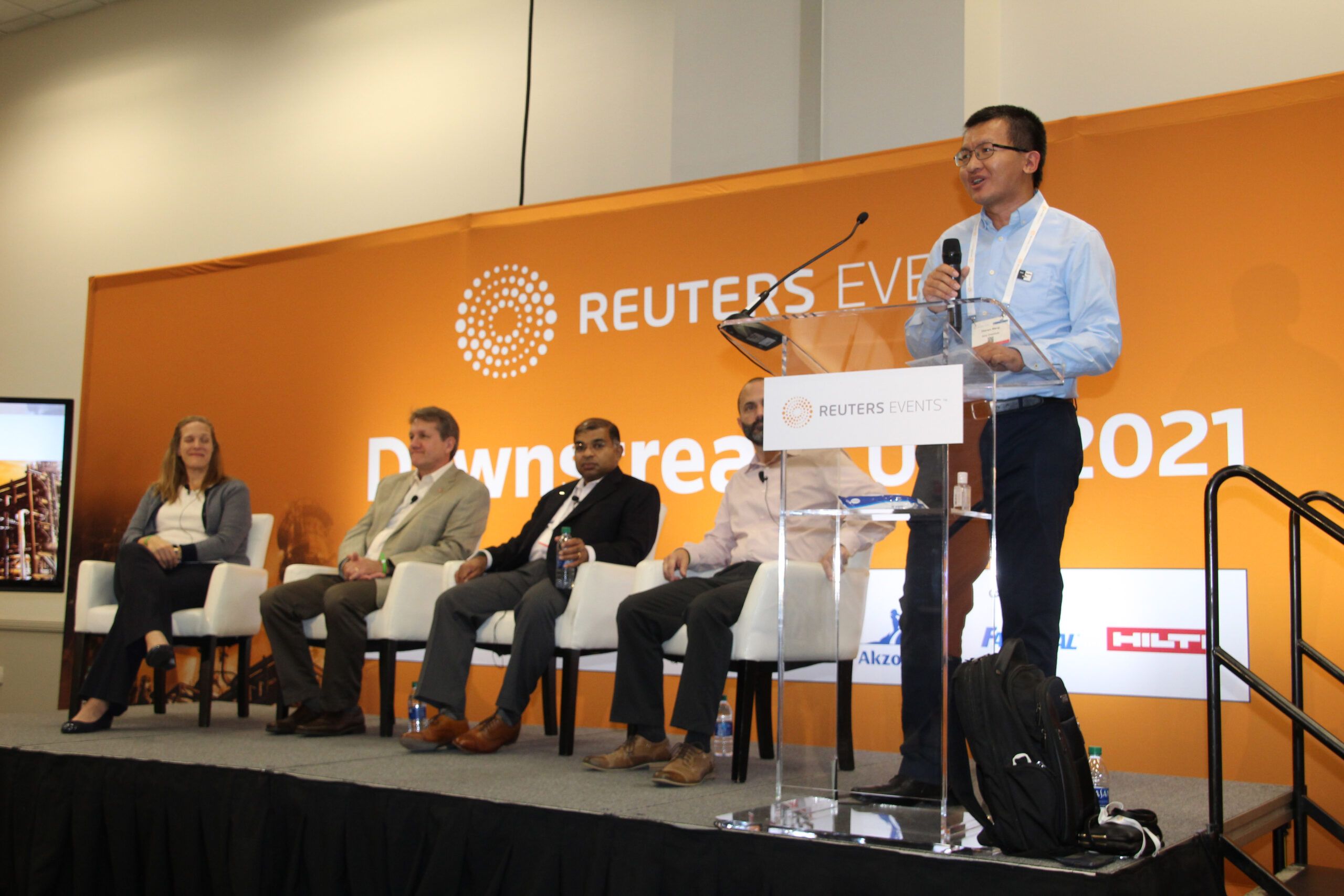Digitalization and AI technologies are more important than ever in the industrial space, but panelists at Reuters Events’ recent 2021 Downstream USA Conference in Houston say progress is being hindered by an inadequate digital infrastructure.
“A number of our facilities have challenges in Wi-Fi capabilities, satellite capabilities etc.,” says Lisa Cashbaugh-Sanchez, senior learning and operational excellence director at Dow Inc. in Houston. “Those have been big hurdles for us. We have a number of facilities trying to get 5G, for example. Getting support for that has been an obstacle to us achieving our digital timeline.”
Cashbaugh-Sanchez and others on a Dow panel shared their digitalization experiences during the first day of the conference, as well how it can be used to achieve operational excellence.
She says the COVID-19 pandemic could have severely disrupted Dow’s “talent pipeline” had they not quickly pivoted to a collaborative digital platform that kept their interns engaged. “Losing the talent in our pipeline would not have been good in the long term,” she adds, “so one of our big successes has been transitioning our internship program to that virtual platform.”
Clark Dressen, senior director of Dow’s Digital Innovation Center, says tools that facilitate remote, collaborative communications will likely remain a permanent component of Dow’s digital platform “because we just can’t get someone on a plane to fly them to the site any more. It’s all about reinforcing that virtual integration and getting those tools into place.
“It’s certainly not easy, but I think we’ve done a good job with that.”
Ultimately, digitalization impacts every component and process at a plant and involves the gathering and integration of voluminous amounts of data, Dressen says. “It’s about looking at the tools that are out there and marrying that with the business and work processes in order to understand the problems that they’re trying to solve,” he adds. “You can’t do one without the other. It’s the applications of those tools (including AI), tying disparate pieces of information together and using that for decision making. By doing that, you can really start to drive efficiencies and leverage that across multiple sites.”
However, Cashbaugh-Sanchez cautions against simply getting the latest and greatest technology. “Industrial owners often make the mistake of starting with a solution then trying to find a problem,” she adds. “They can falsely invest in things that don’t align with their strategic direction or don’t drive the outcomes they need.
“It’s really about understanding what problems the business units are trying to solve and understanding what outcomes they want, then determining how digital solutions and AI can help get to those solutions.”
Twain Pigott, Dow’s global improvement leader in technology expertise & solutions, says Dow has been fairly successful at taking the data and paring it to the right technology. “Today’s tools are creating more data than we’ve ever had, and we’re able to make new decisions off that data because our technology is able to provide it.”
Other Dow panel participants included Zhenyu Wang, technology manager, continuous improvement; and Narayan Ramesh, lead R&D director.
This year’s Downstream USA was a unique hybrid format, with a digital event followed by an in-person conference and exhibition at Houston’s NRG Center on Oct. 21-22. The exhibition featured more than 150 stands covering the industry’s latest innovations, technologies and solutions, allowing attendees to meet one-on-one with vendors.
The exhibition also featured live demonstrations from leading product suppliers along with a focused agenda of presentations and panel sessions on the expo floor.



